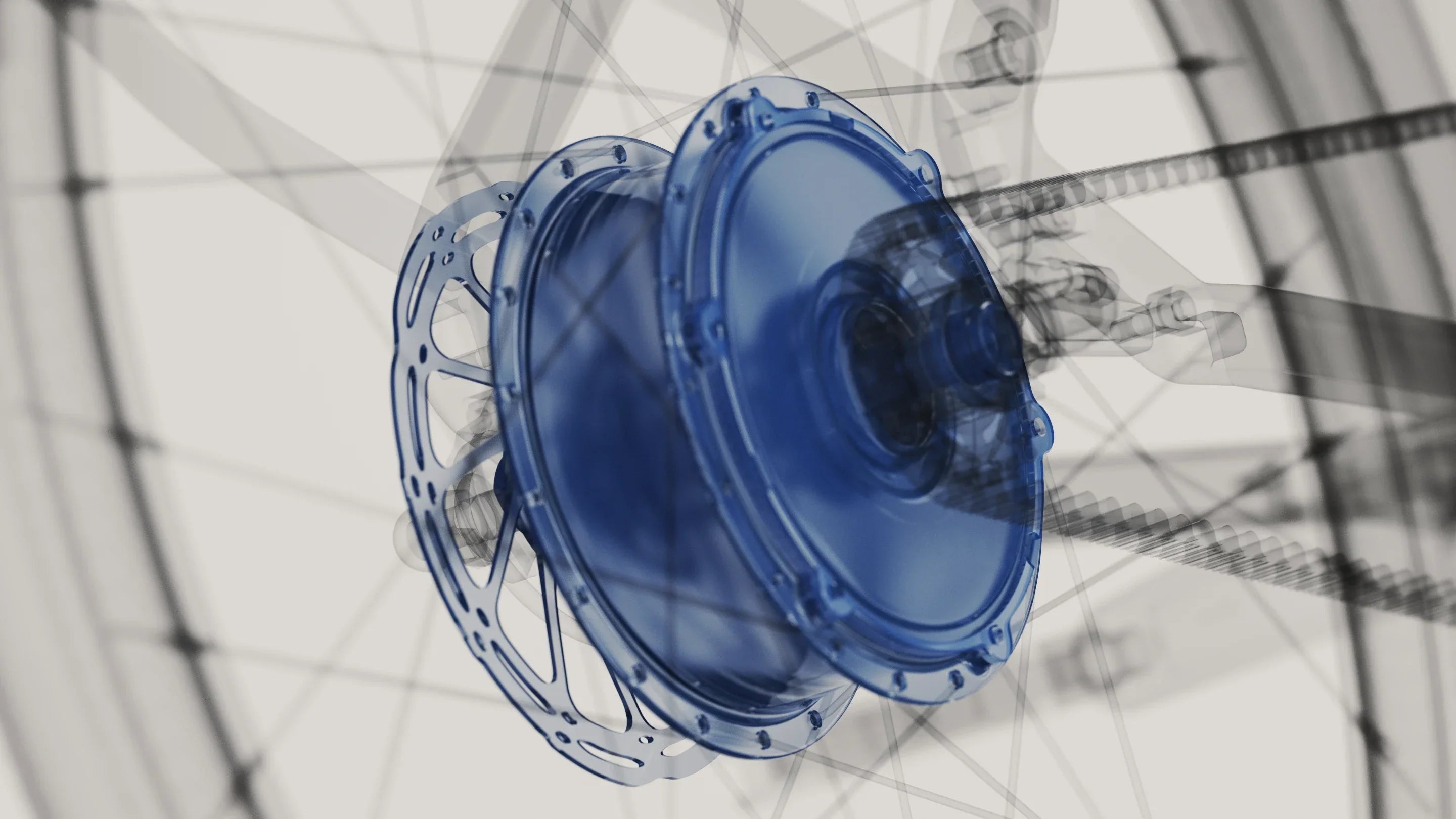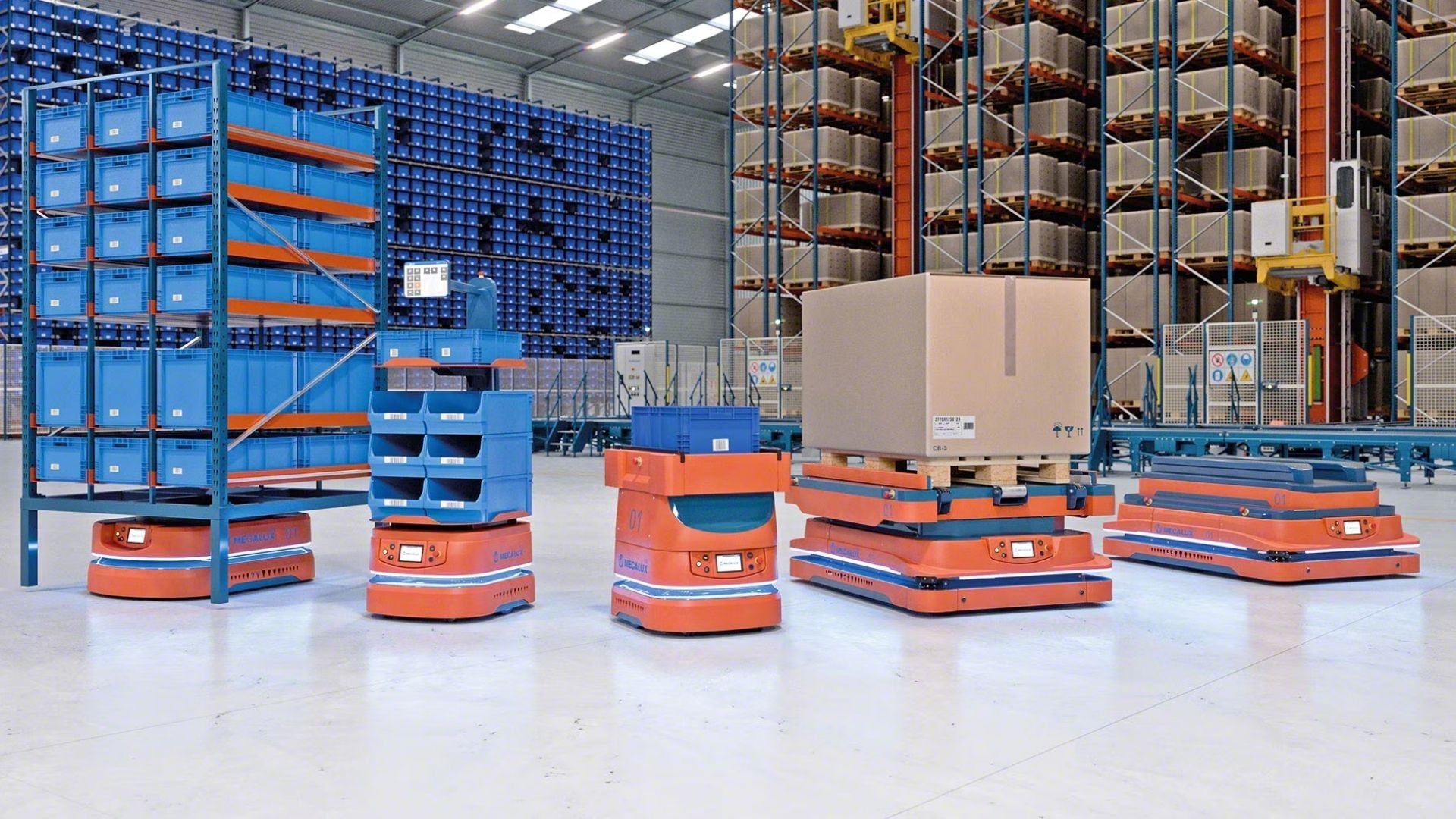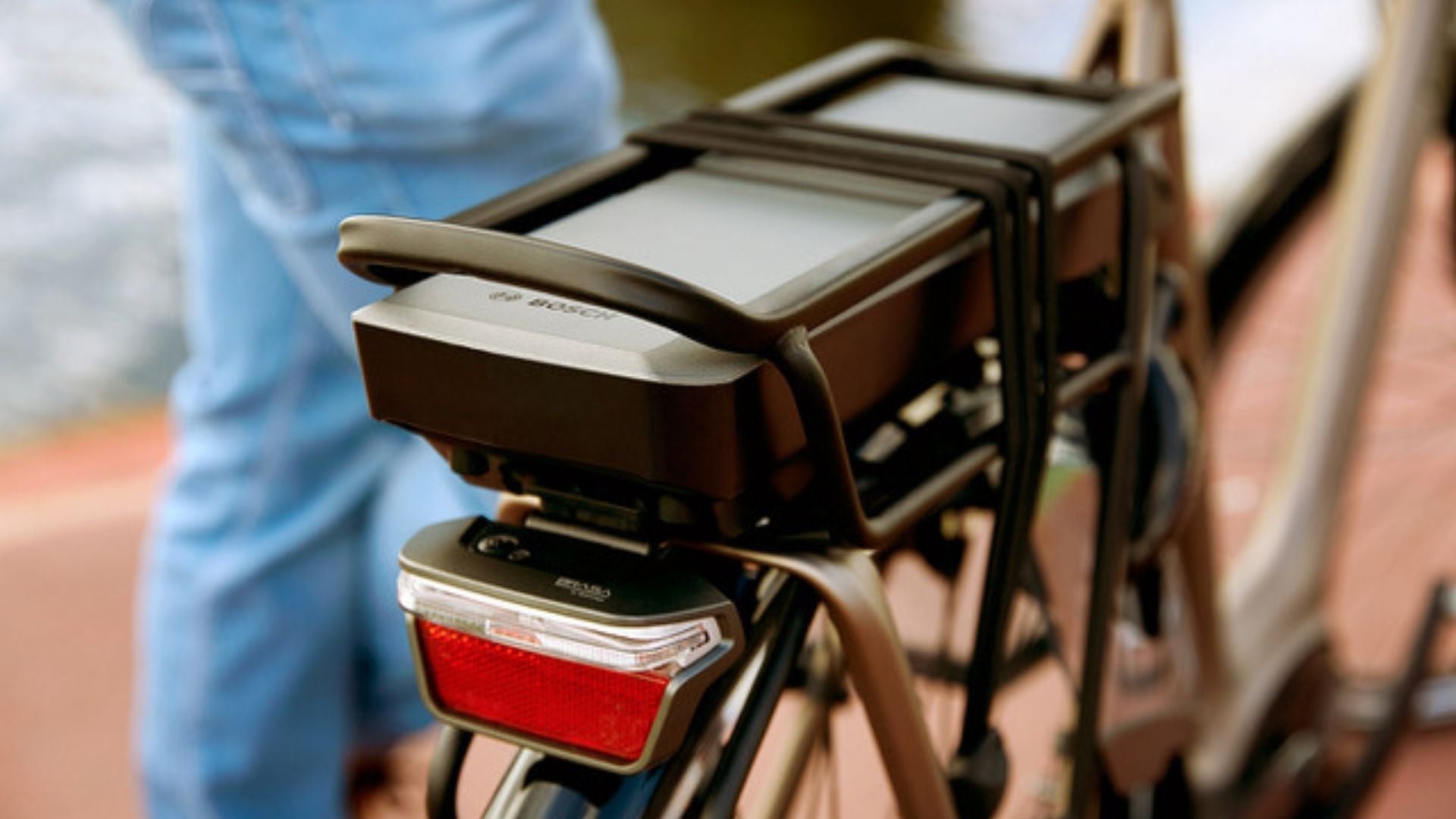How to clean an electric bike?

Keeping your e-bike clean is absolutely essential to prolong its lifespan and ensure optimal performance . In this comprehensive guide, we explain step-by-step how to properly clean your e-bike.
Taking care of your bike will prevent premature wear of components and improve your riding experience.
Follow our practical advice for maintaining your electric bike and riding with complete peace of mind!
Why is it crucial to clean your electric bike regularly?
Cleaning your electric bike regularly is crucial for several reasons.
First, dirt and dust can build up on mechanical and electronic components , which can cause premature wear. Removing these particles extends the life of parts, such as the chain, brakes, and gears.
But a clean bike runs more efficiently . Components free of dirt and debris allow for smoother power transmission and optimal performance.
Regular cleaning also allows you to quickly detect any potential problems or signs of wear. For example, you might spot a crack in the frame, excessively worn brake pads, or frayed cables. This gives you the opportunity to make necessary repairs before they become major problems.
Finally, a clean e-bike contributes to rider safety . Dirt can hide mechanical issues, such as cracks or loose parts, which could lead to accidents. Components such as brakes and tires work much better when they are free of dirt and debris, ensuring better responsiveness and grip on the road.
How often should you clean your electric bike?
How often you clean your electric bike depends primarily on how you use it and the conditions in which you ride.
If you use your e-bike daily for city commuting on well-maintained roads, a thorough cleaning every two weeks is usually sufficient. This removes dust and debris, while also checking the overall condition of the bike.
For those who regularly ride on dirt roads , muddy tracks, or in adverse weather conditions, more frequent cleaning is recommended. After each ride , especially in muddy or wet conditions, it is advisable to quickly clean the frame, wheels, and major components. Particular attention should be paid to areas such as the chain and brakes, as these are more likely to accumulate dirt and moisture, which can lead to corrosion and rapid wear.
In winter , when roads are often salted and wet, weekly cleaning is recommended to avoid the corrosive effects of salt on metal components. Salt can damage the frame, chain and wheels if not cleaned regularly.
Finally, even if you're not using your e-bike for an extended period of time, it's important to clean it before storing it ! This prevents dirt from settling in and causing long-term damage.
Preparations before cleaning
Before you start cleaning your e-bike, it's important to prepare yourself properly to protect its components and ensure effective cleaning. Here are the steps to follow to prepare your e-bike for cleaning:
- Turn off and disconnect the battery : The first step is to turn off your e-bike and remove the battery. This prevents any risk of short circuiting or damage to the electrical components. Place the battery in a dry and safe place while cleaning;
- Protect electrical components : Use tape or plastic bags to cover and protect sensitive parts of your bike, such as the display screen, connection sockets, and other electronic components. This will prevent water and cleaning products from seeping in and causing damage.
- Gather your tools and cleaning supplies : Prepare everything you'll need, including a bucket of water, a sponge, soft cloths, a soft-bristled brush, bicycle-specific cleaning products, and chain lubricant. Here, make sure you use non-corrosive products so as not to damage your bike's components.
- Choose a suitable location : Carry out cleaning in a well-ventilated area and preferably outdoors;
- Inspect the bike : Before you begin cleaning, do a quick inspection to identify areas that need attention. Check for areas that are heavily soiled, mud, grease buildup, and other contaminants.
- Prepare the surfaces to be cleaned : If necessary, detach removable accessories such as lights, bags or bottle cages to facilitate access to different parts of the bike, which will allow you to clean more efficiently and avoid damaging these accessories.
Step by Step: How to Clean Your Electric Bike

Step by step guide
Cleaning an electric bike requires following a precise process to ensure all parts are clean, without damaging the electrical components. Here's a detailed guide that will be of great help to you:
- Initial rinse: Start by using a garden hose with a gentle spray to roughly rinse your bike. The idea is to avoid high-pressure water jets that can damage electrical and mechanical components;
- Applying the cleaner: Apply a bike cleaner to the frame, wheels, and drivetrain. Make sure to use a product specifically designed for e-bikes to avoid any risk of damage, then let the product sit for a few minutes to break down dirt and grease;
- Cleaning components: Using a sponge or soft cloth, clean the frame and other non-mechanical parts by gently rubbing them. For the chain and drivetrain components, use a soft-bristled brush to dislodge dirt and debris;
- Cleaning wheels and brakes: Clean the wheels with a suitable brush to remove mud and dust, paying particular attention to the rims and spokes. For example, use a clean cloth to clean the brake discs or brake pads, making sure to remove any traces of oil or grease;
- Final Rinse: Rinse the bike again with clean water to remove all cleaner residue and dissolved dirt;
- Drying: Using a clean, dry cloth, you can then wipe down the bike, starting with the electrical parts and areas where water might accumulate. Dry the chain and drivetrain components thoroughly to prevent rust;
- Lubrication: After drying, apply a specific bicycle chain lubricant to the chain. Rotate the pedals backward to distribute the lubricant evenly, then wipe off excess lubricant with a clean cloth to prevent dirt buildup;
- Final Inspection: Reinstall the battery and any accessories you removed, and check that all components are secure and functioning properly. Do a quick test to make sure everything is in order;
- Storage: If you do not plan to use your bike immediately after cleaning, store it in a dry, dust-free place!
Can you wash an electric bike with a pressure washer?
Washing an e-bike with a pressure washer is not recommended at all! High-pressure water jets can damage sensitive electrical and mechanical components. If water gets into electrical connections, motors, or bearings, it can cause malfunctions and corrosion.
If you must use a pressure washer, take strict precautions, such as reducing the water pressure to a minimum and maintaining a distance of at least one meter from the bike. Never aim the jet directly at electrical components, bearings, the chain, or brakes. Focus on less sensitive areas, such as the wheels and frame, using quick movements to avoid water pooling.
We would like to point out that it is much safer and more effective to clean your e-bike with a low-pressure garden hose , sponges , soft brushes and cleaning products specially designed for bicycles!
Cleaning specific components
Cleaning the specific components of your e-bike requires special attention to ensure their proper functioning and durability. Here's how to clean the disc brakes, chain, and electrical components, using the appropriate products:
Caution: Never spray water or cleaning products directly onto electrical components! Make sure all components are completely dry before reconnecting the battery and turning the bike back on, then you're done.
Post-cleaning maintenance
Maintaining your electric bike after cleaning is another important step, but one that people don't always think about. Don't worry, here are some additional tips on the matter:
- Lubricate your e-bike chain : After cleaning and drying your chain, apply a specific lubricant for e-bikes. A small amount of lubricant on each link of the chain will be enough, turning the pedals backward to distribute the product evenly (regularly lubricating the chain reduces wear and ensures a smooth transmission);
- Check the electrical components : After cleaning, carefully inspect all electrical components. Check that the connections are secure and free of dirt or moisture, that the cables show no signs of wear or damage, then replace the battery and turn on the bike to check that all systems are working properly. If you notice any problems, consult the owner's manual or contact a professional for further diagnosis;
- Inspect the brakes and tires : Inspect the brakes to ensure they are working properly, which means disc brakes should be free of dirt and the pads should be in good condition. Feel free to test the brakes to check their responsiveness, and check that the tires have the correct pressure;
- Don't forget to clean other components : The other components of your e-bike also deserve your attention, such as the pedals, derailleurs, and grips, are clean and working properly. Simply use a clean cloth to wipe off any residual moisture on the frame and other surfaces, and thus prevent corrosion;
- Store your electric bike properly : If you are not going to use your bike immediately after cleaning, store it in a dry, dust-free place (with a protective cover)!
If you're still hesitant about buying your own electric bike, don't hesitate to run a simulation of the aid and subsidies to which you are entitled!
Answers to frequently asked questions
Can you wash an electric bike?
Yes, you can wash an e-bike, but avoid using high-pressure water jets! Instead, use a low-pressure garden hose, sponges, and soft brushes to clean the frame and components. Also, always remember to protect electrical parts by covering them or avoiding them when washing.
What is the maintenance of an electric bike?
E-bike maintenance includes regularly cleaning the frame, chain, and brakes, as well as checking and lubricating the chain. It's equally important to check the electrical components, ensure the connections are clean and secure, and check the condition of the tires and brakes!
What product should you use to clean your bike?
Use specific bicycle cleaning products, such as chain degreasers and disc brake cleaners. Avoid harsh chemicals that can damage components, and be sure to use soft cloths, sponges, and soft-bristled brushes for gentle cleaning.
What is the lifespan of an electric bicycle motor?
The lifespan of an electric bicycle motor depends on its use and maintenance, but it is generally several thousand kilometers, often between 10,000 and 20,000 km. Regular maintenance and proper use can thus extend the life of the motor.
Recommended products and tools for cleaning your electric bike
To effectively clean your electric bike, it is essential to use the right products and tools:
- Bike cleaner : Use a specific e-bike cleaner that is gentle on components yet effective against dirt and grease;
- Chain degreaser : Choose a degreaser designed for bicycle chains, such as "Chain Cleaner," which removes dirt and lubricant residue without damaging metal parts;
- Disc Brake Cleaner : A disc brake cleaner like Disc Brake Cleaner helps keep brakes performing well by removing oil and contaminants without leaving any residue;
- Chain Lube : After cleaning, use a chain lubricant, such as Chain Lube, to ensure smooth transmission and reduce wear. Electric bike-specific lubricants are particularly suitable;
- Soft sponges and cloths : Use non-abrasive sponges and microfiber cloths to gently clean the frame and components without scratching the surfaces,
- Soft-bristle brushes : A soft-bristle brush is perfect for cleaning hard-to-reach areas like the cassette, derailleurs, and wheels. Brush kits in different sizes are also very practical and a good investment;
- Chain Cleaning Tools : A chain cleaning tool, such as a chain washer, makes chain maintenance easier by effectively removing dirt and grease;
- Frame and wheel guards : Finally, to avoid splashes when cleaning, use frame and wheel guards!
Easy maintenance with the Anod electric bike
The Anod Hybrid is primarily designed with a structure that allows easy access to all essential components . Whether cleaning the chain, adjusting the brakes or checking the electrical connections, every part of the bike is easily accessible without the need for complex disassembly.
The benefit of this design? It allows for quick and efficient maintenance , reducing the time and effort required to keep your bike in perfect condition.
The materials used in the manufacture of the Anod Hybrid are chosen for their corrosion resistance and durability . The aluminum frame, for example, is not only lightweight but also weather-resistant, meaning it requires less maintenance and stays in good condition for longer. The components are also treated to resist wear and dirt, making cleaning and maintenance easier.
Another key benefit of the Anod Hybrid is its easy-to-maintain drivetrain ! The chains and gears are designed to minimize the buildup of dirt and grease, making them easier to clean. Internal drivetrains also reduce exposure to the elements, extending component life and reducing the frequency of required maintenance.
The Anod Hybrid's electrical components , including the battery and cables, are protected by waterproof housings and water-resistant connectors. This prevents the ingress of dirt and moisture, reducing the risk of short circuits and corrosion. Users can therefore safely wash their bike without fear of damaging the electrical components.
Finally, it's worth noting that the Anod Hybrid comes with detailed maintenance guides and built-in tools , making maintenance even more accessible to users! The manuals provide clear instructions on cleaning and maintenance, while the built-in tools make it easy to carry out basic adjustments and repairs. As a result, even novice cyclists can maintain their bike without any difficulty!





